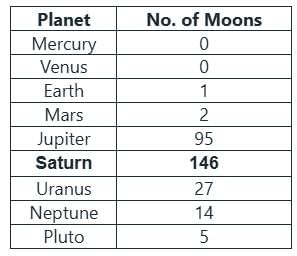Olympiad Test: Earth And Universe -1 - Class 4 MCQ
20 Questions MCQ Test Science Olympiad Class 4 - Olympiad Test: Earth And Universe -1
A basketball spinning on someone’s finger is:
Where on earth do you think it would be easy to capture solar energy?
Part of the earth that supports life and where living beings exist is called:
Which planet is the only one that supports animal and plant life?
The following planets are all made up of gas:
When a planet’s orbit around the sun looks like an oval, it is called:
The planet Jupiter has many storms, its most famous is called the:
Which two planets cross orbits, sometimes making one closer to the sun than the other?
Which is the largest planet in the solar system?
Which of the following is true for Orion? Orion is:
Rounded to the nearest day, the Mercurian year is equal to:
One Jupiter day is equal to which of the following?
Name the planet that has the greatest number of known moons:
On which planet can one find the solar system’s largest volcano?
|
53 videos|44 docs|59 tests
|



















